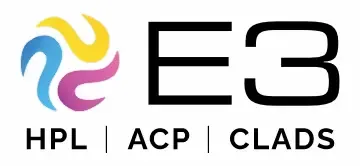The evolution of facades and techniques in architecture has been a fascinating journey, shaped by both functional and aesthetic considerations. Here’s an overview of the evolution of cladding:
-
- Early Materials: Historically, cladding involved the use of locally available materials, such as wood, stone, and brick. These materials were used for their durability and ability to withstand weather conditions.
- Industrial Revolution: The advent of the Industrial Revolution brought about significant changes in construction. Cast iron and later, steel, became popular materials for cladding due to their strength and versatility. This era saw the rise of ornate cast iron facades in urban areas.
-
- Modernism: The Modernist movement in the early 20th century emphasised simplicity and the use of new materials like glass and concrete. Curtain wall systems, characterised by large glass panels held in place by metal frames, became popular for skyscrapers and modern buildings.
-
- Post-War Innovations: After World War II, there was a surge in experimentation with materials. Aluminium and composite materials started to be used in cladding. Aluminium composite panels (ACPs) gained popularity for their lightweight properties and versatility in design.
-
- Sustainability: In recent years, there has been a strong emphasis on sustainable cladding materials. Timber, for example, has made a comeback as a renewable and aesthetically pleasing cladding option. Additionally, materials with good insulation properties to improve energy efficiency have become crucial.
-
- Safety and Regulation: Safety concerns, particularly regarding fire safety, have led to stricter regulations in many regions. This has prompted the development of fire-resistant cladding materials and better building practices.
-
- Biophilic Design: A recent trend in cladding involves incorporating natural elements like green walls and living facades. This not only provides an aesthetically pleasing look but also enhances the building’s connection with nature.
-
- Smart Cladding: With the rise of the Internet of Things (IoT), cladding materials are now being integrated with sensors and technology. This allows for dynamic facades that can respond to environmental conditions.
-
- Digital Technologies: Advances in computer-aided design and manufacturing have revolutionised cladding design. Architects can now create intricate and unique cladding patterns that were previously impossible to achieve.
The evolution of ACP Sheets reflects broader changes in architecture, construction technology, and design philosophies. Today, architects and builders have a wide range of materials and techniques at their disposal, allowing for both functional and artistic expression in cladding design.
For more information contact:

